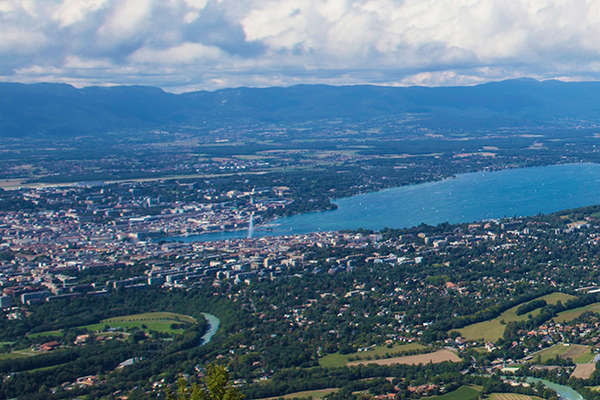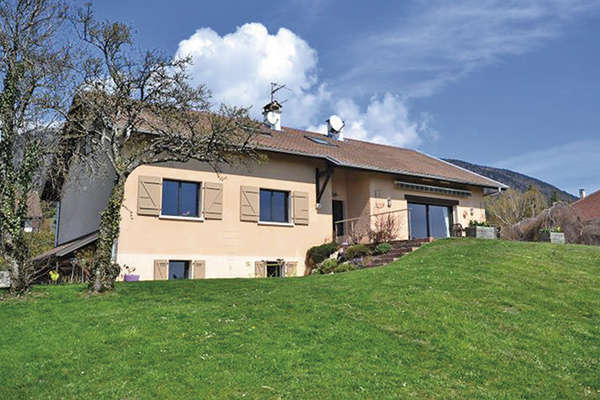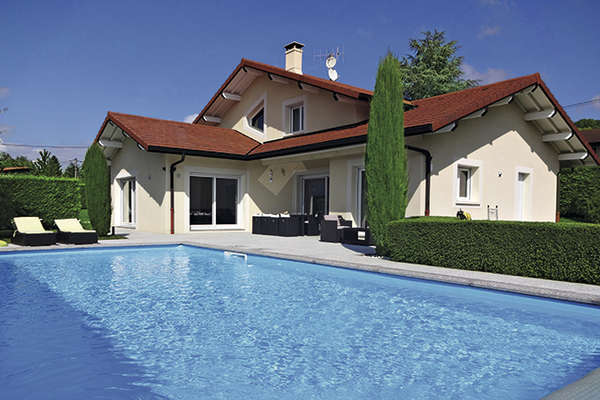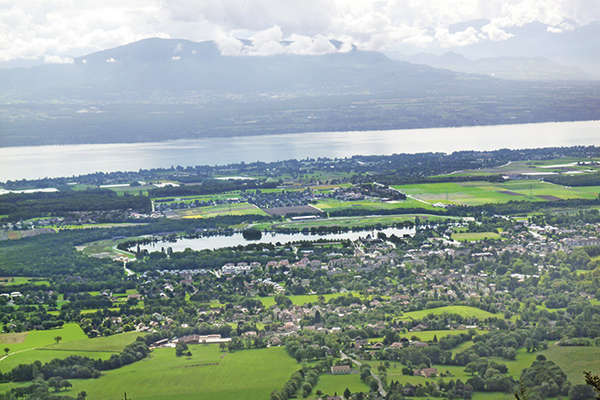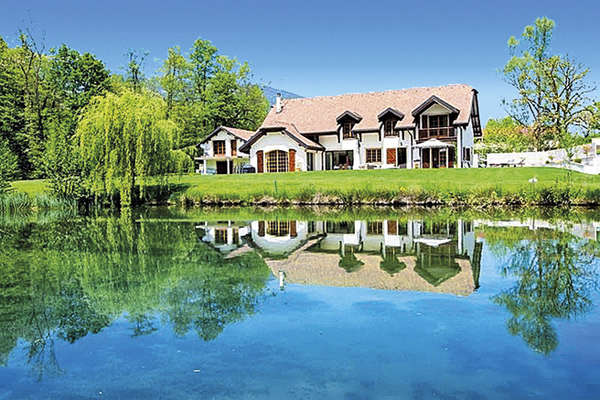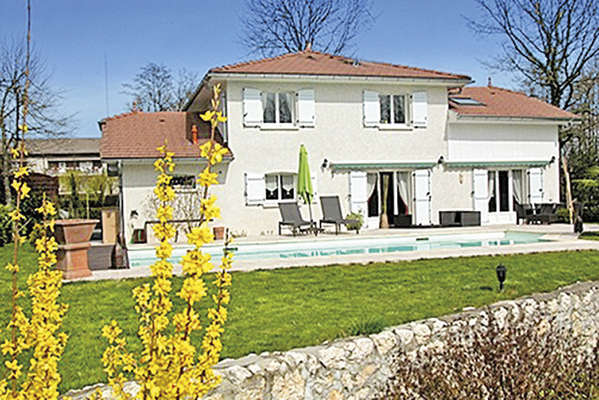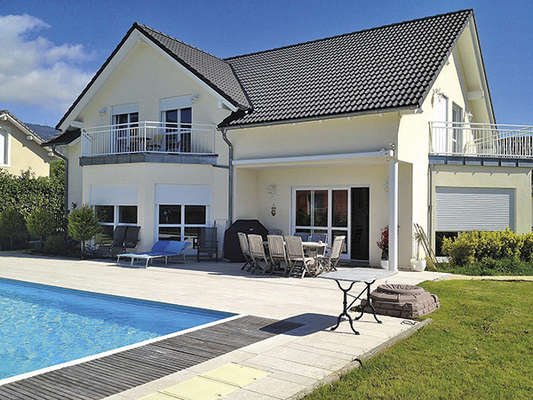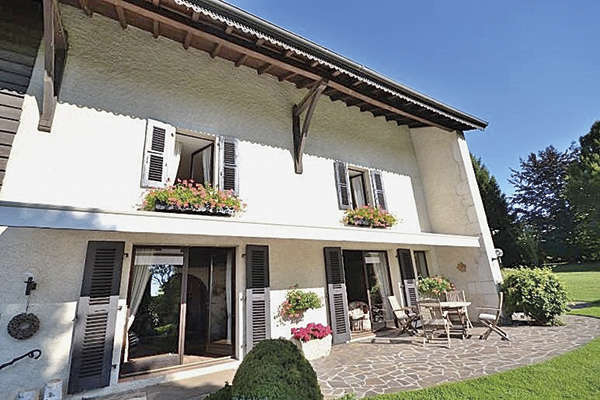The canton of Loriol, a buoyant market
By Laetitia Rossi - 25 March 2010
Loriol-sur-Drôme (5,700 inhabitants) is the main town of the canton bearing its name, composed by Livron (7,760), Mirmande (570), Cliousclat (641), Saulce-sur-Rhône (1,650) and Ambonil (115). The address certainly exercises it charm on occasional residents and the retired in search of the sun, but also gives the locals the chance to live and work on-site.
Loriol stands at the crossroads of main rail and road routes, on the Marseille-Lyon TGV line, the RN 7, A7 and RN 304 highways, the latter connecting the “département” to the Ardèche. Neighbouring Livron stands at the confluence of the Rhône and Drôme. If agriculture, focusing on wine and fruit, is still omnipresent, industry and the service sector also play their parts. Visitors admire the castle and historic centre, its authentic facades and sturdy Renaissance doors. Characterized by its elevated position and rock-garden plants, Mirmande forms part of a luxuriant landscape on raised land. In the 19th century, the silkworm was responsible for the village’s most affluent hours. Listed today among the 100 most beautiful villages in France, it once employed almost 3,000 people before the decline in this activity. It owes its second lease of life to artists such as André Lhote. The volcanologist Haroun Tazieff directed its municipal team from 1979 to 1989. Founded in 947, Cliousclat waited until the 18th century before turning its attention to pottery and other crafts. Saulce marks the meeting-point between the Rhône and La Tessone, while Ambonil, originally a Roman town then the stronghold of the Counts of Valentino, produces the yellow sand used in local construction.
“Loriol hosts the only motorway exit in the valley, a feature that explains its rise both economically and demographically,” says Fanny Belorgeot of Solomo Immobilier, boasting three decades of experience in the area. Children benefit from schools up to “collège” level with a bus service then taking them to “lycées” in Montélimar, Valence and Crest. Estates in the first peripheral area, built in the 1980’s between the centre and industrial zones, are of interest to first-time buyers who pay 160,000 € for living space of 90 m2 (three bedrooms) with a garden of 300 m2. Professional people and senior executives in the transport industry or go-ahead firms prefer the hillsides, sheltered from the wind and facing due west. Here, the famous “Provençal villa” of 120 to 140 m2 in grounds of 2,500 m2 exchanges hands from 260,000 to 330,000 €. Retirees with a preference for apartments face a shortage in this sector. The few old apartments available with 3 or 4 main rooms cost from 80,000 to 110,000 €.
“The swelling population could ultimately erase the boundary between Loriol and Livron, only separated by the river,” predict Jean-Albert and Sébastien Caillard of Orpi L’Espace Immo 26-07. The Val de Drôme is gradually becoming a fall-back market for the Drôme Provençale, in the same way as the latter greets fans of the Luberon. Starting with “papy boomers”, disillusioned by rampant urbanization on the coast or tired of lives spent travelling between Lyon and Paris. Only an hour from the first ski-resorts, 2 hours from the Mediterranean and 2 hrs 15 by train from the capital, 75 % of the region’s accommodation consists of houses. In Loriol, 91 % are main homes versus 9 % of holiday residences : figures show respectively 70 and 30 % in Cliousclat, 40 and 60 % in Mirmande. The expansion plan for the ZI des Crozes demonstrates the municipalities’ desire to stimulate local employment. People working in Valence, a commune about 20 km away, applaud the affordable housing and the micro-climate that exists from Saulce onwards. The crisis seems to have spared old stone and the top end of the market, ranging from 400,000 to 2 million euros. Three years ago, two properties of 300 and 450 m2, in need of total rehabilitation, in about 5 acres of land, sold for about 600,000 €. Following extensive modification, they are now estimated to be worth over 1 million euros. By creating a prestige section, the Orpi network of independent agencies is in fact shedding new light on this segment of the market.
Based in Mirmande, Pierre Lespets of the firm Entre Pierres & Soleil notes a change in buyers’ behaviour. Backed by the municipality and associations, the clientele seems likely to evolve : the percentage of buyers likely to live here year-round is clearly on the rise. Events such as exhibitions in private gardens organized by “L’Art à Demeure”, the Day of Rare Plants and excursions on horseback (“La Drôme à Cheval”) point to the charms of this little gem in “département 26”. The ancient village offsets a lack of shops and easy accessibility by the charm of its buildings and lovely scenic views. Orchards of cherry, peach and apricot trees are dotted around this enchanting setting. Inside the village itself, there are only one or two sales a year. Prices partly depend on orientation. Recently, a house of 150 m2 in need of refurbishment, prolonged by a terrace, found a new owner at 190,000 €. Another example, of 95 m2 in good condition with a garden of 300 m2, enjoying an uninterrupted view and access for a car, sold for 220,000 €. In the countryside, prices range, exceptions apart, from 300,000 to 800,000 €. A house of 500 m2 waiting to be renovated, with a park of almost 2.5 acres, costs 650,000 € ; an old building to restore with an identical surface area and grounds of 6,000 m2 is pegged at 300,000 €, and a 30 year-old villa of 100 m2, requiring renovation, in grounds of 5,000 m2, is offered at 220,000 €.
“The canton is not homogeneous,” agrees Benoît Maclin of Guy Hoquet L’Immobilier. Loriol, for example, attracts 80 % of first-time buyers. Often employed in Valence, young couples with children can afford 150,000 to 180,000 €. For equivalent housing, Livron, which does not have to face the symbolic barrier of crossing the Drôme, posts prices 10 % higher. Between Montélimar and the Prefecture, Saulce offers good value for money. With a budget of 300,000 €, executives, senior citizens, the middle-class and occasional residents choose Mirmande or Cliousclat, villages with a far more residential atmosphere. “The dark days seem to be behind us,” resumes Bénédict Maclin, who chalked up his best month over the last three years in January, 2010. As a result of lower interest rates and the price correction for basic properties of around 15 %, he is optimistic. It remains to reassure customers, especially by offering ancillary services such as the re-sale guarantee of up to 50,000 €.
